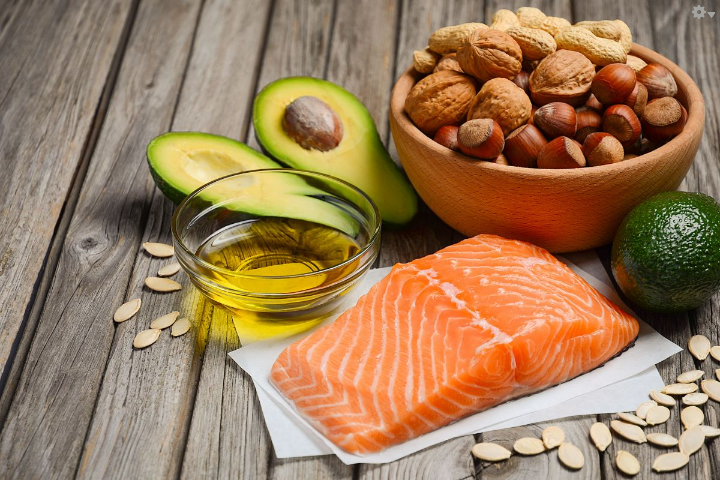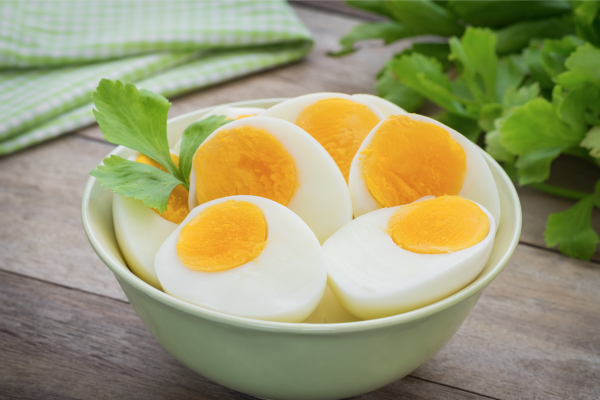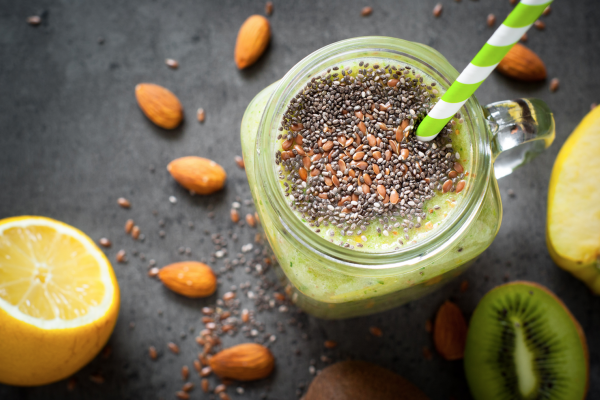From the low-fat diet trends of the '90s to the high-fat ketogenic diet, there has been a lot of conflicting information out there about how much fat to include in your diet. Fats have a place in every healthy, balanced diet. They are essential for giving your body energy, absorbing certain nutrients, protecting your organs and helping your body regulate temperature. Fats also add delicious flavor and texture to food and help to slow digestion, which contributes to the feeling of satiety (being full).
The main types of fats in foods are unsaturated fats and saturated fats, and each type has different characteristics and different effects on your health.
Unsaturated fats
Unsaturated fats include monounsaturated fats (MUFAs) and polyunsaturated fats (PUFAs). These types of fats are liquid at room temperature and are found in many plant-based and fish-based foods. When eaten in place of saturated fats, unsaturated fats can improve blood cholesterol levels, which can decrease your risk of heart disease.
Examples of monounsaturated fats include certain oils (olive, canola, peanut, sesame, safflower), avocados, peanut butter and many nuts and seeds. Examples of polyunsaturated fats include soybeans and tofu, corn, sunflower seeds and oil, ground flaxseed, fatty fish and walnuts.
Omega-3 fatty acids are a type of polyunsaturated fat that may be especially beneficial to your heart. Fatty fish — such as salmon, trout, mackerel, herring, sardines and tuna — contain the most omega-3 fatty acids. Plant-based sources of omega-3 fatty acids include flaxseed, chia seeds, walnuts, soy foods and pumpkin seeds.
Saturated Fats
Saturated fats have been found to raise total blood cholesterol levels and LDL cholesterol levels, which can increase the risk of cardiovascular disease. To remember which foods are sources of saturated fat, think of the acronym SAT. S stands for solid at room temperature, such as butter or lard on the counter. A is for animal sources, such as red meat and full-fat dairy. And T is for tropical oils, such as coconut oil and palm oil.
Have more questions?
Our nutrition team can play a large role in your care. Learn more about all the services we offer.
Learn MoreTrans fats
This is a type of fat that occurs naturally in some foods in small amounts, but most trans fats come from partially hydrogenated oils. However, regulations are now in place to remove trans fats from partially hydrogenated oils in the food supply. Trans fats have been shown to increase the unhealthy, low-density lipoprotein (LDL) cholesterol and lower the healthy, high-density lipoprotein (HDL) cholesterol, which can increase the risk of cardiovascular disease. Aim to avoid trans fats as much as possible.
Swap unhealthy fats for better fats
You can improve your diet by decreasing your intake of saturated fats and increasing unsaturated fats. Try these tips:
- Cook and bake with liquid oils instead of solid fats such as butter, lard or shortening.
- Skip bottled, creamy salad dressing and make your own with heart-healthy oils, such as olive oil, walnut oil or avocado oil. Mix two parts oil with one part vinegar; add your favorite herbs and enjoy!
- Stir ground flaxseed into your cereal, smoothies, yogurt, pancake batter and muffin mix.
- Toss a few nuts or seeds into salads for some added crunch, spread nut butter on whole grain bread or snack on pistachios when hunger strikes. Just be mindful of portion size and stick to about ¼ cup serving.
- Add avocado to sandwiches and salads or toss some into your morning smoothie for added creamy texture.
- Chia seeds swell when placed in liquids, creating a pudding-like texture. Make chia seed pudding at home by whisking into the milk of your choice with yogurt and a little maple syrup.
- Try fish and plant sources of protein in place of some meats and poultry.
- Choose lean cuts of meat or poultry. Trim or drain fat from meat and remove skin from poultry.


